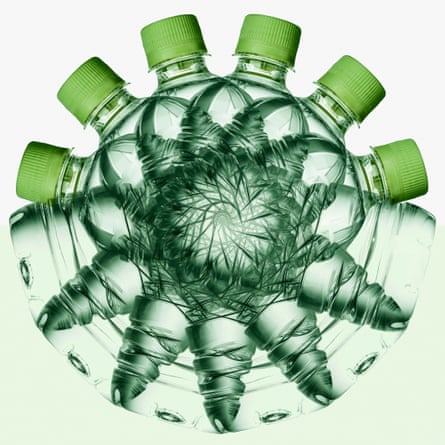Because our world and its resources are finite and will be put under more pressure as the population increases out to 2050 (before the population peaks and starts to decline), we need a new approach. Linear systems that just extract mineral or vegetable resources and then dump them must be scrapped. “Waste equals food” – in both organic and industrial ecosystems. Everything we mine and manufacture should have the end-of-life recycling in mind when designing the product in the first place. It all needs to be fed back into what some call a circular economy – but I prefer the more vivid description of Industrial Ecology (see wiki).
The International Society for Industrial Ecology (ISIE) promotes industrial ecology as a way to address sustainability challenges and achieve a circular economy. The science of industrial ecology applies a systems perspective to explore how material and energy are used by society to find solutions to complex environmental problems. The ISIE facilitates communication among scientists, engineers, policymakers, managers, and advocates who are interested in better integrating environmental concerns with economic activities.
They run the Journal of Industrial Ecology at the Wiley Library. (A great source for free journals, etc. Oooh the internet is dangerously addictive!)
This idea of course borrows from natural ecosystems where the death or decomposition of one life feeds another. As above, it analyses material flows, and aims to create a continuously repeatable loop. But this does not have to be simplistic. A product does not have to be recycled back into itself. Instead, it might feed the manufacture of another completely different product, which enables something else to happen, which takes pressure off some further thing – all the while reducing how much original feed-stock we need to take from nature.
But it all starts with the rather boring subject of collecting and sorting household waste. What innovations are possible in this sector?
- Household waste: the Australian 3 bins system
- Local Recycling businesses are collecting more
- Plastics – Catalytic Hydrothermal Reactor
- Plastics – Warm bacterial reactors
- The circular economy
- Will Gasification recycle much of our waste into jet fuel?
- Fairer industry for poorer nations and “indie” types – open source hardware lets local workshops can build hardware 1/8th the cost of name brands!
Household waste: the Australian 3 bins system
Many Australian suburbs have 3 bins they use. Recycling schemes can get out of hand for users. I’m thinking of the Japanese system where they sort every scrap of various categories into dozens of different plastic bags which must be put out on 4 different days of the week every week! Neighbours have even been known to return your incorrectly sorted plastic bag to your house. All of this fuss and bother is just not needed. In Australia we have rubbish collection once a week.
RED bin: collected every week. This is for all non-recyclable household waste, such as dirty diapers, pizza boxes, old shoes, etc. It contains the sort of stuff that might one day go into a gasifier (see point 7 below).
GREEN bin: collected every fortnight. It’s for lawn clippings and yard waste and even kitchen peelings and restaurant scraps. Maybe one day future pizza boxes can be more biodegradable and go in there? It will all be composted down into soil.
YELLOW bin: collected every fortnight. It’s to recycle paper, glass, PET plastics and aluminium cans. Sadly non-PET plastics – about half of them – cannot be recycled yet in Australia and many countries. They go to landfill. More on that under plastics below, and maybe if gasifiers arrive economically enough ALL plastics can just go in the red bin instead.
Our council also has a recycling drop-off point if you can be bothered driving all that way! Does your local government have a recycling centre? Could your local Scouts group or some other volunteer organisation arrange a once-a-month recycling truck to collect stuff from your suburb for a few hours one Saturday morning and then drive stuff there from your suburb?
Local Recycling businesses are collecting more
Metal: Our local shops have a community bin for a metal recycling company. Someone in a store just calls them when it’s full, and they come and get it. I recently had an old metal BBQ I broke down and drove into this company. It felt good knowing it was going to be recycled.
Ewaste: Once every few months our community will book Arnie’s Recall – a local e-waste recycling bin that try to save and sell old radios and electronics – or if it’s truly broken break it down and sell parts and then recycle the rest for you.
Recycling Plastics
Plastics – Catalytic Hydrothermal Reactor
Many countries have the PET plastics recycling scheme which, while a good early start, is not complete. It actually downcycles the quality of plastic. If you imagine plastic molecules as a Lego tower, PET smashes the Lego tower apart with a sledgehammer. Some of the bits break rather than separate. But the technologies below are gentler and attempt to separate apart those molecules. It all sounds like Gasification mentioned above – but more specifically tailored to plastics and wood in particular.
First, there’s Australia’s Licella – which is being built in the UK first. As the ABC reported in 2019:-
“Now Dr Humphreys sees the mountains of stockpiled plastic as a wasted resource — one he says could be used instead as fuel or remade into new plastic.
His Catalytic Hydrothermal Reactor (Cat-HTR) does just that through a form of chemical recycling that changes the plastics at a molecular level using hot water at a high pressure to turn them back into oil.
“What we’re doing is we’re simply taking those materials and converting them back to the liquids and the chemicals they came from,” he told 7.30.
From there, the oil can be turned into bitumen, petrol or back into different kinds of plastics.
Dr Humphreys said the Cat-HTR technology he and his co-founder patented was different from existing plastic-to-oil technologies like pyrolysis, which is a process that involves heating materials at a very high temperature.
Unlike traditional physical recycling, it does not require plastics to be separated according to type and colour, and can recycle anything from milk cartons to wetsuits and even wood by-products.
It also means plastic products can be recycled again and again.
After trialling the technology for the past decade at a pilot plant on the NSW central coast, the company Licella is now ready to take its idea to market.
It is opening its first commercial recycling plant in the United Kingdom, where it says the government grants and policy environment are much more favourable than in Australia.”
Plastics – Warm bacterial reactors
Another approach is to find bacteria that eat plastics, and keep them nice and cosy in a warm bio-reactor. The Guardian February 2022:-
Meanwhile there is evidence that microbes all around the world are evolving similar abilities. A study published in October 2021 looked at microbial DNA from a range of habitats. In areas with high levels of plastic pollution, the researchers found that the microbes were more likely to have enzymes with plastic-degrading tendencies. In line with this, a 2020 study identified a soil bacterium that can feed on some of the components of polyurethane, which releases toxic chemicals when it breaks down.
The question now becomes: how significant a role can these enzymes really play in reducing plastic pollution?
The circular economy
So far, most of the activity has been in universities, but some groups are attempting to commercialise the technology. The University of Portsmouth has set up Revolution Plastics, which aims to forge links between academics and industry. “We’ve already advertised a joint PhD project with Coca-Cola,” says McGeehan. He is also part of an international research team called BOTTLE, which is negotiating with large companies.
The most advanced project is run by Carbios, a French biotechnology company. In September 2021 it opened a pilot plant in Clermont-Ferrand, where it will test a system for recycling PET. Carbios’s system uses an enzyme that was first identified in compost, which they modified so that it worked faster and could operate at high temperatures where PET is softer.
The advantage of these enzymes is that they break down the plastic at the molecular level, so it is possible to recreate the highest-quality plastic. In contrast, other forms of recycling cause a slow decline in quality, until eventually the plastic cannot be recycled again and gets landfilled or incinerated. Enzymatic recycling, in theory at least, is truly circular. “That’s what we call a closed-loop recycling system,” says Ramos. “You recycle something, but then you’re able to make something new of the same quality out of that.” To date, only a tiny percentage of plastics are being recycled in this way, but the enzymes could change that – “Which would be great.”

McGeehan says: “I think in the next five years we’re going to be seeing demonstration plants all over the place.”
Still, there are limits to the enzymes’ usefulness. “It will never be a one-size-fits-all type of solution,” says Ramos, and we should not count on the enzymes to mop up all our plastic waste. Some plastics are even tougher than PET.
Blank points out that the enzymes work best if the plastic has been softened by heating. That means releasing the enzymes into the environment would not do much good: they only really work in temperature-controlled reactors. So the solution to plastic in the sea remains the same as before: we have to stop releasing it in the first place.
Nevertheless, it seems likely that plastic-eating enzymes will have a role to play as societies move towards a circular economy in which everything is recycled as much as possible. In a study published in July 2021, McGeehan and his colleagues estimated how much enzymatic recycling of PET will cost. They calculate that it could compete on cost with standard manufacturing methods, which use fossil fuels as feedstock.
The key is to be savvy about where we use the enzymes, says Blank. Some plastics can be mechanically recycled, a technology that is improving rapidly, so they probably are not the best targets. Instead, he says, researchers should go for plastics that cannot be recycled any other way – particularly if they can become substances that are otherwise expensive to make.
Ultimately, the enzymes have to be part of a revolution in the entire way we make and use plastics, says Ramos. Better methods of recycling are useful, she adds, but they are only part of the solution. It is also important for plastic products to be designed in such a way that they can easily be reused and recycled. That might mean avoiding designs that use several kinds of plastic, or fuse plastic with other materials, as these are very difficult to recycle.
Will Gasification recycle much of our waste into jet fuel?
IF we overbuild the renewable grid so much that in the more energy abundant months we have super-cheap, super-abundant ‘super-power’ – will gasification become so cheap that it is where we dump some of our excess power 10 months of the year? Gasification has the potential to turn much of the household waste above into half the building ingredients for the next house! See Gasification for more.
Fairer industry for poorer nations and “indie” types – open source hardware lets local workshops can build hardware 1/8th the cost of name brands!
It’s open sourced industry for the poor. If developing nations get a hold of this philosophy, they’ll be able to order parts online, build the equipment themselves, save a ton of money – and repair and recycle components themselves locally. The possibilities are amazing!

